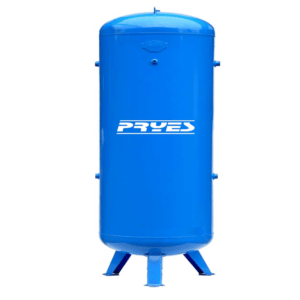Compressed Air Treatment Equipment
Air Compressor Tank
An air receiver, sometimes referred to as a compressed air tank, is an integral part of any compressed air system. The main purpose of this is to act as temporary storage to accommodate the peaks of demand from your system and to optimize the running efficiency of your plant.
Compressed air tanks are most commonly used for filling up tires—on cars, bicycles, trailers, ATVs, etc. —but they’re also useful for applications using a blow-off tip.
Air Compressor applications require an air compressor tank or air receiver tank to make the compressed air mechanism efficient and effective. Air that is kept under greater pressure than atmospheric pressure to be used for energy transfer in industrial processes and other applications is typically known as compressed air.
Benefits of having an air compressor tank
Having a suitable tank for your air compressor system carries various benefits. However large the system, using an air compressor tank delivers capabilities that you start benefiting from right away:
- Maintain constant pressure:
Air compressors use pistons or screw elements to create pressurized air. The piston operates in up and down or the screws in a rotary motion to compress air and release it. The cyclical operation that delivers compressed air in pulses can be challenging when it comes to long-term use. A tank dampens the pulsation, improving the flow of compressed air and at constant pressure. Uniform airflow ensures reduced wear and tear on your compressor.
- Prevents wear and tear:
Compressor motors activate automatically when the system senses a need for air. If you run a system without a tank, the motor will end up working over a longer period of time to meet the air demand. Compressor tanks provide the support a system needs to reduce cycles and prevent excessive loading and unloading of air into the system. It makes sure that there isn’t excessive wear and tear of components and ensures that your system is cost and energy efficient.
- Removing condensation:
Atmospheric air contains water as vapor. Water vapor often contains traces of impurities like dust and oil. In the longer run, when your system compresses air, these vapors will cool down and the condensation will end up in your system. As the contaminants build, the system performance goes down. This will eventually lead you to replace the unit. Tanks collect this condensation into moisture traps that you can quickly drain.
